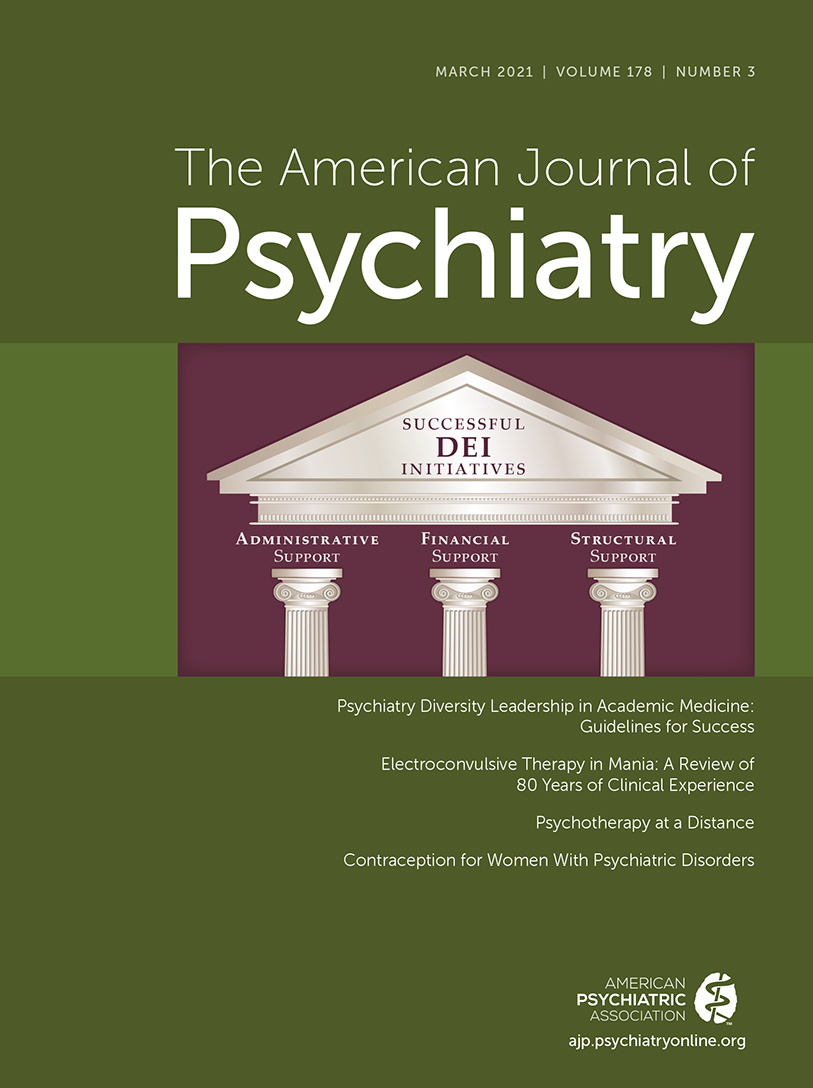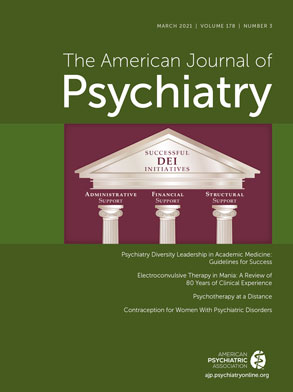It may seem unusual that a psychiatric journal would include an article with guidance on contraception. However, more women than men suffer from a non-substance-related psychiatric condition, and women are more likely to seek treatment than their male counterparts (
1). The peak ages at which women experience the most common psychiatric conditions, mood and anxiety disorders, are during their reproductive years. A subset of psychotropic agents, antidepressant medications, are prescribed for at least 15% of reproductive-age women (
2), and when one adds other mood stabilizers and antipsychotic medications, the rate is even higher. As noted by McCloskey et al. in this issue (
3), about one-half of pregnancies are unintended, and the burden of unplanned or poorly timed pregnancies is higher among women with mood and/or anxiety disorders than among women without these illnesses (
4).
Given such factors, there is a high likelihood that clinicians who treat women with psychotropic medications will have a patient who inadvertently becomes pregnant while taking medication. For some, this may be a happy circumstance, but for others, it may cause distress. Indeed, in one survey, when the risks and benefits of medication treatment for bipolar illness were discussed with women seeking expert consultation, nearly 40% decided against pregnancy (
5). Many felt caught between the hazards of a teratogenic exposure on the one hand and the possibility of symptom recurrence on the other. In addition, in some women, use of gonadal steroids for family planning or menopause management is associated with mood symptoms. For these reasons, psychiatrists should be aware of the reproductive options for women and be prepared to have informed discussions with their patients should they be either vulnerable to pregnancy or planning to become pregnant.
As reviewed by McCloskey et al. (
3), contraceptive methods differ in their effectiveness and are rated from tier 1 (most effective) to tier 3 (least effective). With pregnancy rates less than 1%, the tier 1 group of “long-acting reversible contraceptives,” including implants and intrauterine devices (IUDs), have a risk of pregnancy that is similar to that found for male or female sterilization. These methods are also not subject to the vagaries of operator-induced failure (e.g., forgetting to take a pill or inaccurately estimating cycle phase) that are often seen with other methods. Unfortunately, they are also used uncommonly (about 14% of women in the United States). Tier 2 includes injectable methods, such as medroxyprogesterone acetate, that have slightly higher rates of pregnancy than implants or IUDs; higher pregnancy rates are probably due to inconsistent receipt of the repeat injections at 3-month intervals.
The most commonly used methods are in tier 2 and include oral contraceptives, patches, and rings. They have a published failure rate of 0.2%–0.3% of women with unintended pregnancies in 1 year, but in reality, they have a 9% pregnancy rate because they are sometimes not used “perfectly” as prescribed (
6). Tier 3 includes the least effective methods, such as condoms, sponge, spermicides, diaphragm, and fertility awareness methods. McCloskey et al. note failure rates of more than 13%, but other work suggests a substantial impact of typical use bringing failure rates to 20% or more (
6).
Of particular concern to mental health professionals is induction of psychiatric side effects, including mood symptoms and even suicidal thoughts and gestures, among users of hormonal contraceptives. This section of the authors’ review will be particularly helpful to mental health providers, especially given the controversy in this area. Recent studies seem to associate mood symptoms and suicidal attempts with hormonal contraceptive use, including work that interrogated a large Danish database (
7,
8). McCloskey et al. correctly point out that the findings were largely relevant to adolescents and, given the uncontrolled nature of the data, subject to confounding. For example, in a subsequent study that used data from the National Comorbidity Survey–Adolescent Supplement (
9), the authors found a similar unadjusted association between depression and hormonal contraceptive use. However, when they added variables to their model that included smoking and age at sexual debut, associations between depression and exogenous hormone use disappeared. The impact of hormonal contraceptive use was largely attributable to age at sexual debut, suggesting that there is a relationship between seeking contraception and depression in adolescents, rather than a direct hormonal effect promoting depression. Such differences in the literature could be resolved by randomized placebo-controlled studies rather than cohort studies. However, there is limited work in this area, and it is difficult to conduct. Despite such difficulties, one small study cited by McCloskey et al. that employed a randomized placebo-controlled design did not support an association between mood symptoms and hormonal contraceptive use (
10). Still, psychiatrists are well suited to monitor adolescents or older women who initiate hormonal contraceptives for onset or worsening of mood or anxiety symptoms.
A final component of McCloskey and colleagues’ review provides guidance on possible interactions between hormonal contraceptives and commonly used psychotropic medications. Oral contraceptives can increase clozapine levels and the attendant side effects, possibly through effects on hepatic cytochrome P450 1A2, 2C19, and 3A4 enzymes. Lamotrigine and valproic acid concentrations can be reduced by contraceptives that include ethinyl estradiol, an inducer of the metabolic enzyme uridine 5′-diphospho-glucuronosyltransferase 1A4. Psychiatrists need to evaluate differences in efficacy or toxicity that could occur when exogenous gonadal hormones are introduced or changed.
Medicine is often practiced in silos, but in many instances a team-based approach, or at least an approach that involves practitioner communication, is to the benefit of patients. Family planning is an example of this. The third member of the team is the patient, whose engagement in family planning can enhance positive psychiatric and reproductive health outcomes. While as a field we often explore the consequences of pregnancies in which there was a fetal exposure to psychotropic medication, we can minimize patient and practitioner concerns about such exposures by having discussions about family planning with our patients and their other providers before pregnancy occurs.

